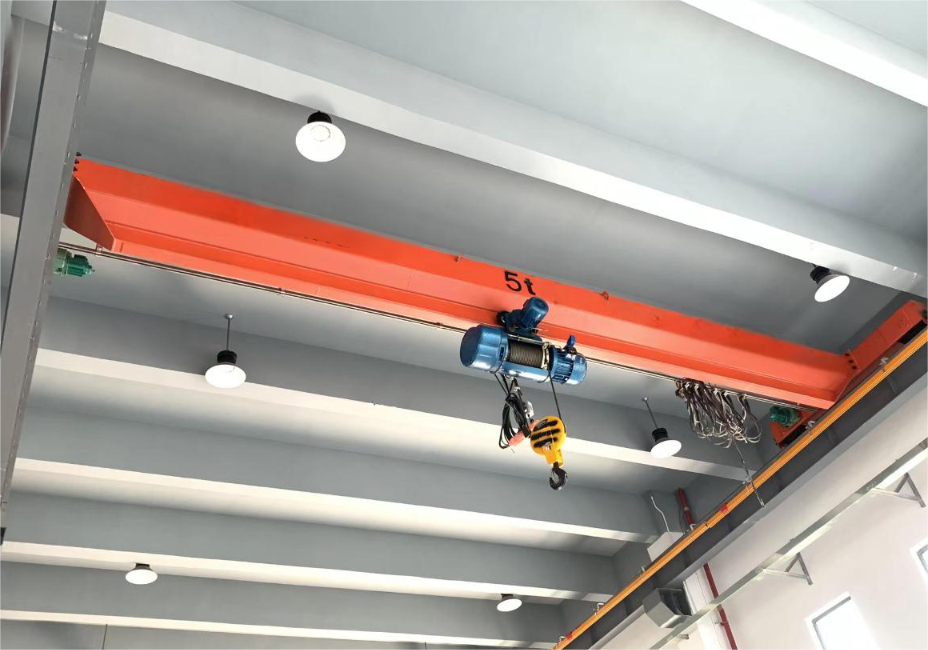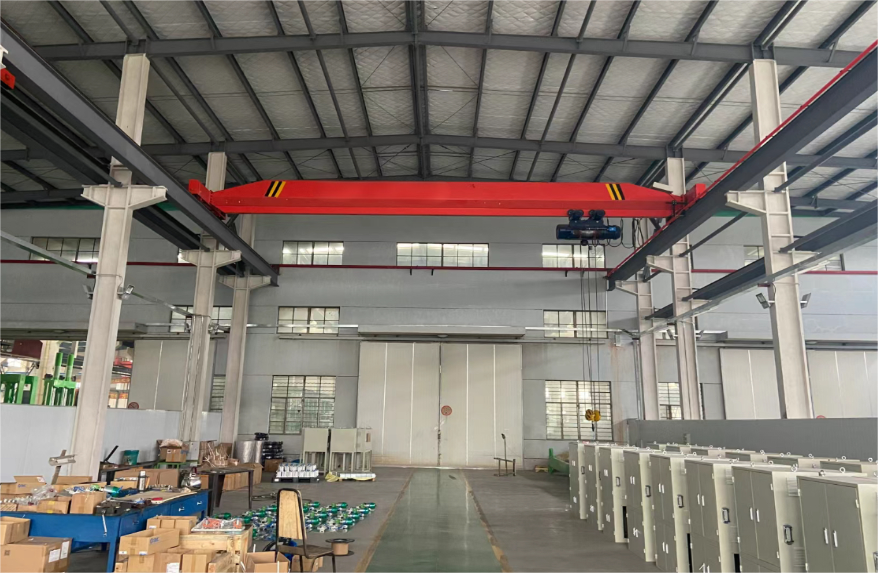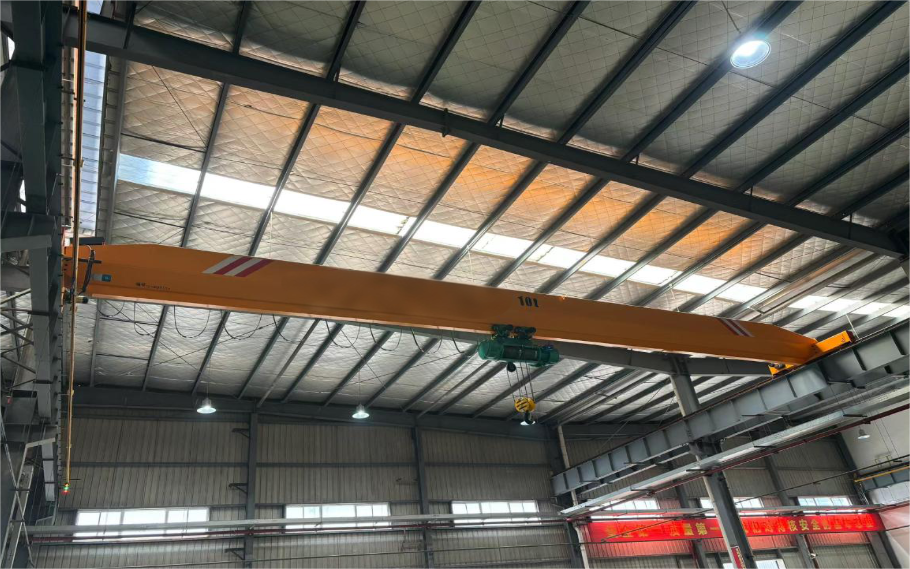Overview
LD single-beam bridge crane is a lightweight, economical and practical electric lifting equipment with a single main beam structure, suitable for material handling scenarios with small and medium tonnage and medium and low working levels. It has a compact structure and flexible operation. It is widely used in indoor places such as workshops, warehouses, and production lines. It is the main structural component of lifting production.
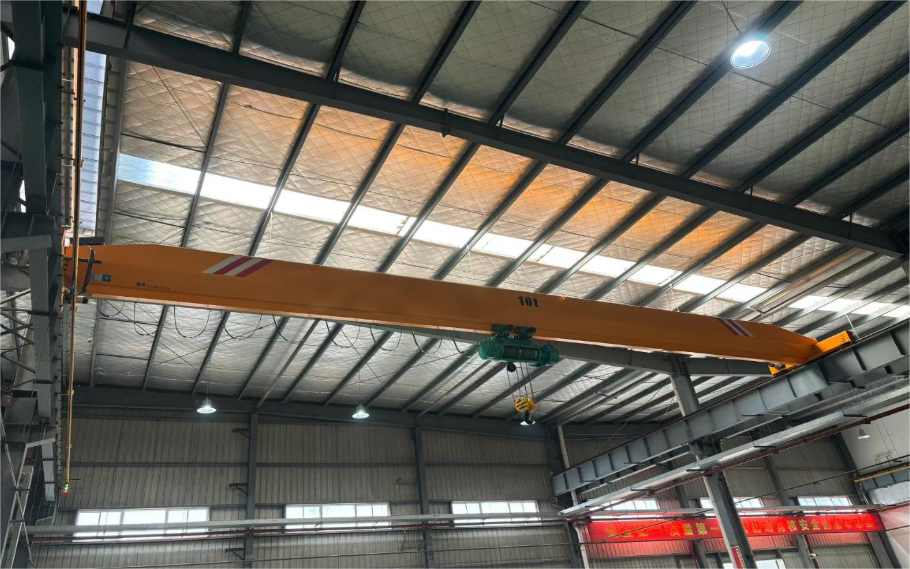
Structural component of lifting production
Adopts box-type structure or I-beam design, with high strength and lightweight characteristics to ensure load stability.
Common off-track design (trolley track deviates from the center of the main beam) optimizes force distribution.
1. Connects both ends of the main beam, equipped with driving wheels and driven wheels, and the drive form is divided into centralized drive (single motor) or separate drive (dual motor).
2. Smooth operation, suitable for straight or curved rails.
1. Suspended under the main beam, responsible for lifting and horizontal movement (lateral operation).
2. Standard wire rope hoist (such as CD1 type) or chain hoist, tonnage range is usually 1 to 20 tons.
1. Trolley operation: The crane moves longitudinally along the factory track as a whole.
2. Trolley operation: The electric hoist moves horizontally along the main beam (some models have fixed hoists and only the main beam moves).
1. Conventional operations are controlled by a ground button box (moving with the equipment) or a remote control.
2. Contains safety devices such as overload protection, limit switches, and emergency power-off.
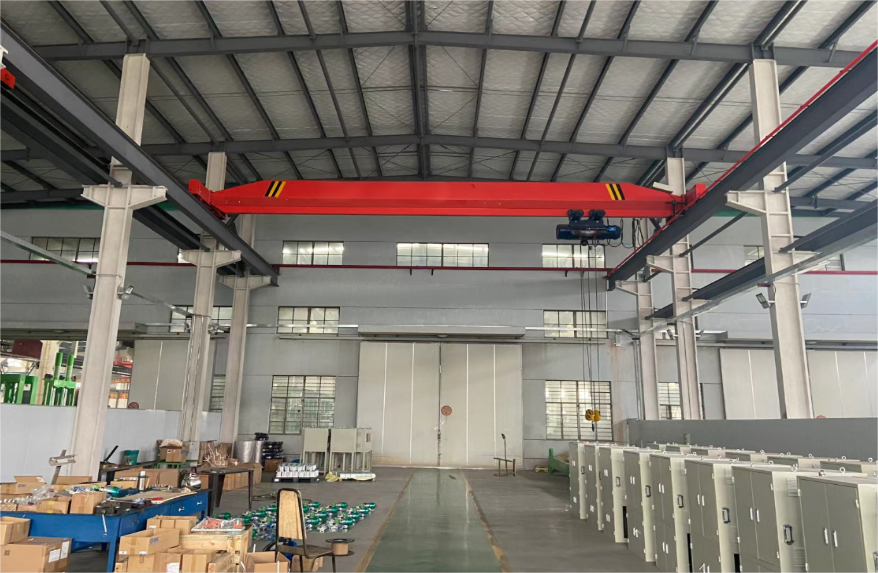
Parameter
| Parameter | Details |
|---|
| Lifting Capacity | Typically 1–20 tons, suitable for light to medium load scenarios. |
| Span | 5–22 meters, customizable based on workshop width. |
| Lifting Height | Generally 6–16 meters, adjustable according to requirements. |
| Working Class | Mostly A3–A5, ideal for intermittent operations. |
| Operating Speed | Hoist, crane, and trolley speeds are adapted for stable operation, meeting general efficiency needs. |
| Control Mode | Common options include pendant control or wireless remote, ensuring easy operation. |
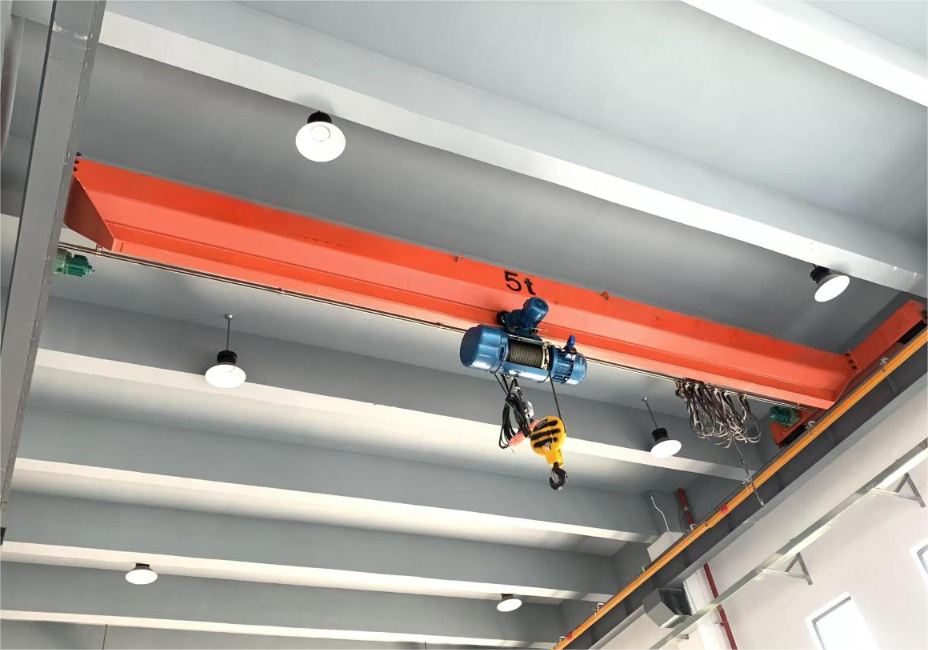
Typical application scenarios
Manufacturing: material transfer on assembly lines, lifting of parts.
Warehousing and logistics: loading and unloading, stacking of goods in warehouses.
Light industry: food, textile, and electronic product production workshops.
Repair workshops: equipment installation, overhaul and maintenance.
Small and medium-sized processing plants: short-distance transportation of steel and molds.
Jinghe Crane provides full-cycle service guarantee
Professional team provides on-site installation guidance to ensure the compliance of equipment operation.
Free operator safety regulations and equipment maintenance training.
The warranty period of the whole machine is usually 12 months (excluding wearing parts), and non-human faults are handled free of charge during this period.
Main parts such as motors, gearboxes, limit switches are always available to quickly respond to replacement needs.
Provide annual maintenance plans to extend the life of equipment and prevent failures.


